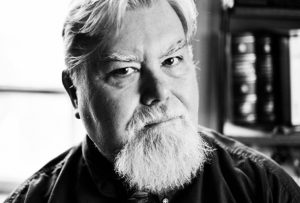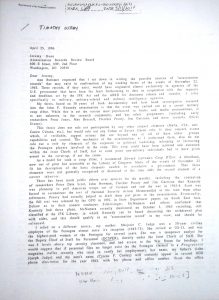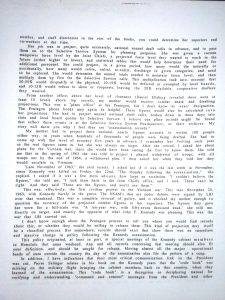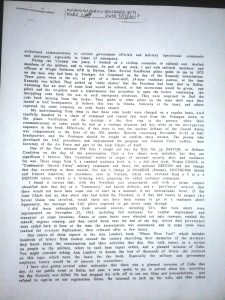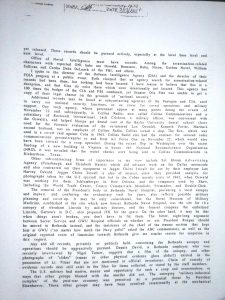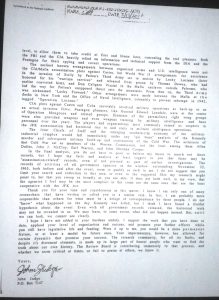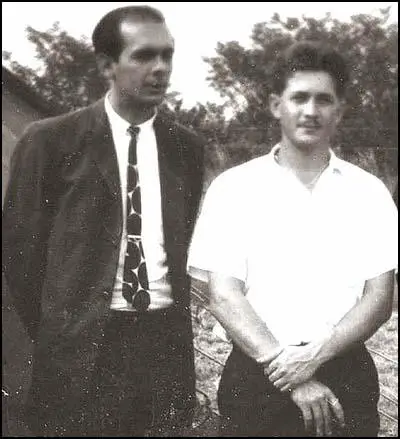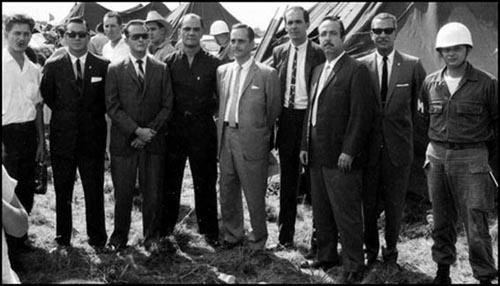The two men were friendly and influenced each other

Karl Marx, left, in 1867 and President Abraham Lincoln in 1865. (Wikimedia Commons; Library of Congress/Friedrich Wunder; Alexander Gardner)
It was December 1861, a Tuesday at noon, when President Abraham Lincoln sent his first annual message — what later became the State of the Union — to the House and Senate.
By the next day, all 7,000 words of the manuscript were published in newspapers across the country, including the Confederate South. This was Lincoln’s first chance to speak to the nation at length since his inaugural address.
He railed against the “disloyal citizens” rebelling against the Union, touted the strength of the Army and Navy, and updated Congress on the budget.
For his eloquent closer, he chose not a soliloquy on unity or freedom but an 800-word meditation on what the Chicago Tribune subtitled “Capital Versus Labor:”
“Labor is prior to and independent of capital,” the country’s 16th president said. “Capital is only the fruit of labor, and could never have existed if labor had not first existed. Labor is the superior of capital, and deserves much the higher consideration.”
If you think that sounds like something Karl Marx would write, well, that might be because Lincoln was regularly reading Karl Marx.
President Trump has added a new arrow in his quiver of attacks as of late, charging that a vote for “any Democrat” in the next election “is a vote for the rise of radical socialism” and that Rep. Alexandria Ocasio-Cortez (D-N.Y.) and other congresswomen of color are “a bunch of communists.” Yet the first Republican president, for whom Trump has expressed admiration, was surrounded by socialists and looked to them for counsel.
Of course, Lincoln was not a socialist, nor communist nor Marxist, just as House Speaker Nancy Pelosi (D-Calif.) and Senate Minority Leader Charles E. Schumer (D-N.Y.) aren’t. (Ocasio-Cortez and Sen. Bernie Sanders (I-Vt.) identify as “democratic socialists.”) But Lincoln and Marx — born only nine years apart — were contemporaries. They had many mutual friends, read each other’s work and, in 1865, exchanged letters.
When Lincoln served his sole term in Congress in the late 1840s, the young lawyer from Illinois became close friends with Horace Greeley, a fellow Whig who served briefly alongside him. Greeley was better known as the founder of the New York Tribune, the newspaper largely responsible for transmitting the ideals and ideas that formed the Republican Party in 1854.
And what were those ideals and ideas? They were anti-slavery, pro-worker and sometimes overtly socialist, according to John Nichols, author of the book “The ‘S’ Word: A Short History of an American Tradition … Socialism.” The New York Tribune championed the redistribution of land in the American West to the poor and the emancipation of slaves.
“Greeley welcomed the disapproval of those who championed free markets over the interests of the working class, a class he recognized as including both the oppressed slaves of the south and the degraded industrial laborers of the north,” Nichols writes.
Across the Atlantic, another man linked the fates of enslaved and wage workers: Marx. Upon publishing “The Communist Manifesto” with Friedrich Engels in 1848, the German philosopher sought refuge in London after a failed uprising in what was then the German Confederation. Hundreds of thousands of German radicals immigrated to the United States in this same period, filling industrial jobs in the North and joining anti-slavery groups. Marx had once considered “going West” himself, to Texas, according to historian Robin Blackburn in his book “An Unfinished Revolution: Karl Marx and Abraham Lincoln.”
Marx was intensely interested in the plight of American slaves. In January 1860, he told Engels that the two biggest things happening in the world were “on the one hand the movement of the slaves in America started by the death of John Brown, and on the other the movement of the serfs in Russia.”
He equated Southern slaveholders with European aristocrats, Blackburn writes, and thought ending chattel slavery “would not destroy capitalism, but it would create conditions far more favorable to organizing and elevating labor, whether white or black.”
Marx was also friends with Charles A. Dana, an American socialist fluent in German who was the managing editor of the New York Tribune. In 1852, Dana hired Marx to be the newspaper’s British correspondent.
Over the next decade, Marx wrote nearly 500 articles for the paper. Many of his contributions became unsigned columns appearing on the front page as the publication’s official position. Marx later “borrowed liberally” from his New York Tribune writings for his book “Capital,” according to Nichols.
Like a lot of nascent Republicans, Lincoln was an “avid reader” of the Tribune. It’s nearly guaranteed that, in the 1850s, Lincoln was regularly reading Marx.

The editorial staff of the New York Tribune sometime during the 1850s. Horace Greeley is seated third from the left. Charles A. Dana is standing in the center. (Mathew Brady/Library of Congress)
In 1860, two major factors helped to propel Lincoln — a one-term congressman and country lawyer most known for losing a Senate campaign — to the Republican nomination for the presidency. First, the support of former German revolutionaries who had become key players in the Republican Party; and second, the support of the party’s newspaper, the Tribune.
Once Lincoln took office, his alliance with socialists didn’t stop. Dana left the Tribune to become Lincoln’s eyes and ears in the War Department, following along with troop movements and telling Lincoln what he thought of his generals. A soldier working in the telegraph office later wrote that “Lincoln waited eagerly” for “Dana’s long d[i]spatches.”
And Greeley continued to urge Lincoln to take a harder line against slavery, to make the Civil War not just about preserving the union but about abolition. Marx did the same in the pages of the Tribune.
In 1863, they got what they wanted when Lincoln issued the Emancipation Proclamation.
[Lincoln moved to end slavery on New Year’s Day 1863. It went on for three more years.]
In January 1865, Marx wrote to Lincoln on behalf of the International Workingmen’s Association, a group for socialists, communists, anarchists and trade unions, to “congratulate the American people upon your reelection.”
He said “an oligarchy of 300,000 slaveholders” had defiled the republic and that “the workingmen of Europe feel sure that, as the American War of Independence initiated a new era of ascendancy for the middle class, so the American Antislavery War will do for the working class.”
A few weeks later, a reply came via Charles Francis Adams — son of former president John Quincy Adams, grandson of former president John Adams and U.S. ambassador to Britain under Lincoln.
He told Marx that Lincoln had received his message, and it was “accepted by him with a sincere and anxious desire that he may be able to prove himself not unworthy of the confidence which has been recently extended to him by his fellow citizens and by so many of the friends of humanity and progress throughout the world.”
Notably, Adams indicated Lincoln considered Marx and company “friends.”
He went on to say that the Union “derive[s] new encouragement to persevere from the testimony of the workingmen of Europe.”
Both letters ran in newspapers across Britain and the United States. Marx was delighted, telling Engels it created “such a sensation” that the “bourgeoisie” in private clubs were “shaking their heads at it.”
[Frederick Douglass needed to see Lincoln. Would the president meet with a former slave?]
Lincoln also met with the New York chapter of the Workingmen’s Association, telling its members in 1864: “The strongest bond of human sympathy, outside of the family relation, should be one uniting all working people, of all nations, and tongues, and kindreds.” Which is perhaps a more eloquent rendering of Marx’s famous rallying cry: “Workers of the world unite!”
Lincoln never took up the mantle of socialism. He believed in the system of wage labor even as he proposed reforms to it; Marx rejected it as another form of slavery. But Lincoln certainly viewed socialists as allies, and Nichols writes, “It is indisputable that the Republican Party had at its founding a red streak.”
Though this fact may be little known now, it hasn’t been a secret to other figures in American history. When the socialist orator and frequent presidential candidate Eugene V. Debs made a campaign stop in Springfield, Ill., in 1908, he told the crowd, “The Republican Party was once red. Lincoln was a revolutionary.”
It was also noted by the Rev. Martin Luther King Jr. In February 1968, at a celebration of the life of W.E.B. Du Bois at Carnegie Hall, King brought up that the co-founder of the NAACP became a communist in his later years.
“It is worth noting,” King said, “that Abraham Lincoln warmly welcomed the support of Karl Marx during the Civil War and corresponded with him freely. … Our irrational obsessive anti-communism has led us into too many quagmires to be retained as if it were a mode of scientific thinking.”


